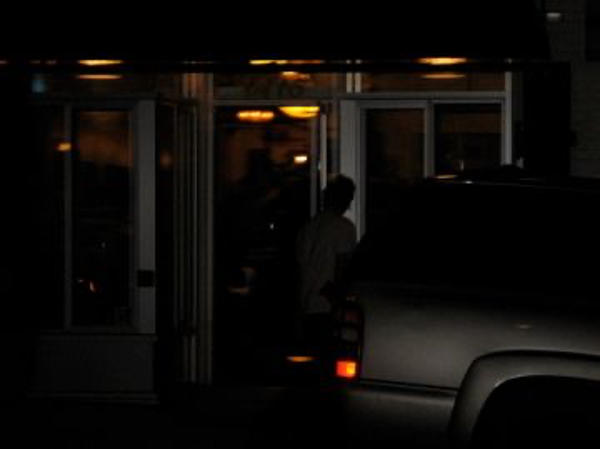The sestina originated among the troubadours of medieval France’s Provence region, and the modern thirty-nine line form is attributed to one of these traveling poet entertainers of the twelfth century, Arnaut Daniel. Daniel’s sestina form was admired by Dante Alighieri, who introduced it to Italian poetry as well.
The sestina is one of the more challenging forms of the era, and perhaps that is one reason it is also a very fulfilling form to craft a poem in – especially when it comes together well. Like many French forms, like the villanelle and the triolet, the sestina is very strictly patterned. Unlike these other forms however, the sestina in its original form was not written using rhymes.
Instead it uses a set of six ending-words in six different patterns of six-line stanzas (sestets), followed by a three-line envoi which uses all six of these refrained words. This gives the poem its thirty-nine lines. The sestina is a metered form, and as long as the pattern is maintained any meter may be employed; in the English language, iambic pentameter is the most common meter chosen.
The Pattern
If we look at the ending words for each line, and label them with the letters A to F, the first six line stanza has the pattern:
A B C D E F
To generate the pattern for the second stanza, we take these letters and starting with the final one (F), we alternate picking up letters from the front and then the back until we have used all six. This gives us the following pattern for the second stanza:
F A E B D C
This diagram may better help to explain the pattern:
We repeat this same technique to create four more patterns, each one reordering the letters from the one above. Our resulting six stanza patterns look like this:
Stanza 1 – A B C D E F
Stanza 2 – F A E B D C
Stanza 3 – C F D A B E
Stanza 4 – E C B F A D
Stanza 5 – D E A C F B
Stanza 6 – B D F E C A
The final three line envoi is done many ways. The only hard and fast rule here, is that each line must end in one of the six words, and contain another inside, so that all six are used in these three lines. Purists will say that the pattern should be:
(B) E, (D) C, (A) F
This is how almost all sestinas were done during the height of their popularity, but since the 19th century poets have made some changes, and now the most common patterns for the envoi lines are (A) B, (C) D, (E) F and (F) A, (E) B, (D) C.
The Circular Sestina
One of the changes that came about in the 19th century was the introduction of the Circular, or Rhyming Sestina. In order to make a rhyming pattern, two sets of three rhyming words are used: Lines A,C, & E rhyme, as do lines B, D, & F.
To accommodate the rhyming of these lines in alternating ababab and bababa schemes, a new sestina pattern was created:
Stanza 1 – A B C D E F
Stanza 2 – F A D E B C
Stanza 3 – C F E B A D
Stanza 4 – D C B A F E
Stanza 5 – E D A F C B
Stanza 6 – B E F C D A
Envoi – (A) F, (B) E, (C) D
An Example
The sestina has, since the resurgence of its popularity in the 1930s, become a vehicle more often used to produce lighthearted and humorous results. Puns have always been at home in the form, and sometimes, the tales they tell are simple, yet strong:
Sestina
By Elizabeth Bishop (1911-1979)
September rain falls on the house.
In the failing light, the old grandmother
sits in the kitchen with the child
beside the Little Marvel Stove,
reading the jokes from the almanac,
laughing and talking to hide her tears.
She thinks that her equinoctial tears
and the rain that beats on the roof of the house
were both foretold by the almanac,
but only known to a grandmother.
The iron kettle sings on the stove.
She cuts some bread and says to the child,
It’s time for tea now; but the child
is watching the teakettle’s small hard tears
dance like mad on the hot black stove,
the way the rain must dance on the house.
Tidying up, the old grandmother
hangs up the clever almanac
on its string. Birdlike, the almanac
hovers half open above the child,
hovers above the old grandmother
and her teacup full of dark brown tears.
She shivers and says she thinks the house
feels chilly, and puts more wood in the stove.
It was to be, says the Marvel Stove.
I know what I know, says the almanac.
With crayons the child draws a rigid house
and a winding pathway. Then the child
puts in a man with buttons like tears
and shows it proudly to the grandmother.
But secretly, while the grandmother
busies herself about the stove,
the little moons fall down like tears
from between the pages of the almanac
into the flower bed the child
has carefully placed in the front of the house.
Time to plant tears, says the almanac.
The grandmother sings to the marvelous stove
and the child draws another inscrutable house.
This poem follows the classic sestina pattern, although the poet chose to be a bit loose with the meter, and so the tale of the child and grandmother becomes a bit less sober than it might have become had she stayed in metric form.
Crafting One of Your Own
The sestina is often used to tell a story, and that story can be in any genre. I have written westerns, romances and even a comedy using the form, and while it is a challenge, like anything else it becomes easier as you practice. To craft a sestina, and indeed any structured form, I have a process, and that is what I would like to share with you.
The first step is to decide on your end-words! What I want to do is come up with words that have more meaning than one so as to play with how they’re used. Begin by writing down your six words and lettering them A-F. Follow the directions until you have the end words for every line. Then fill in backwards…










